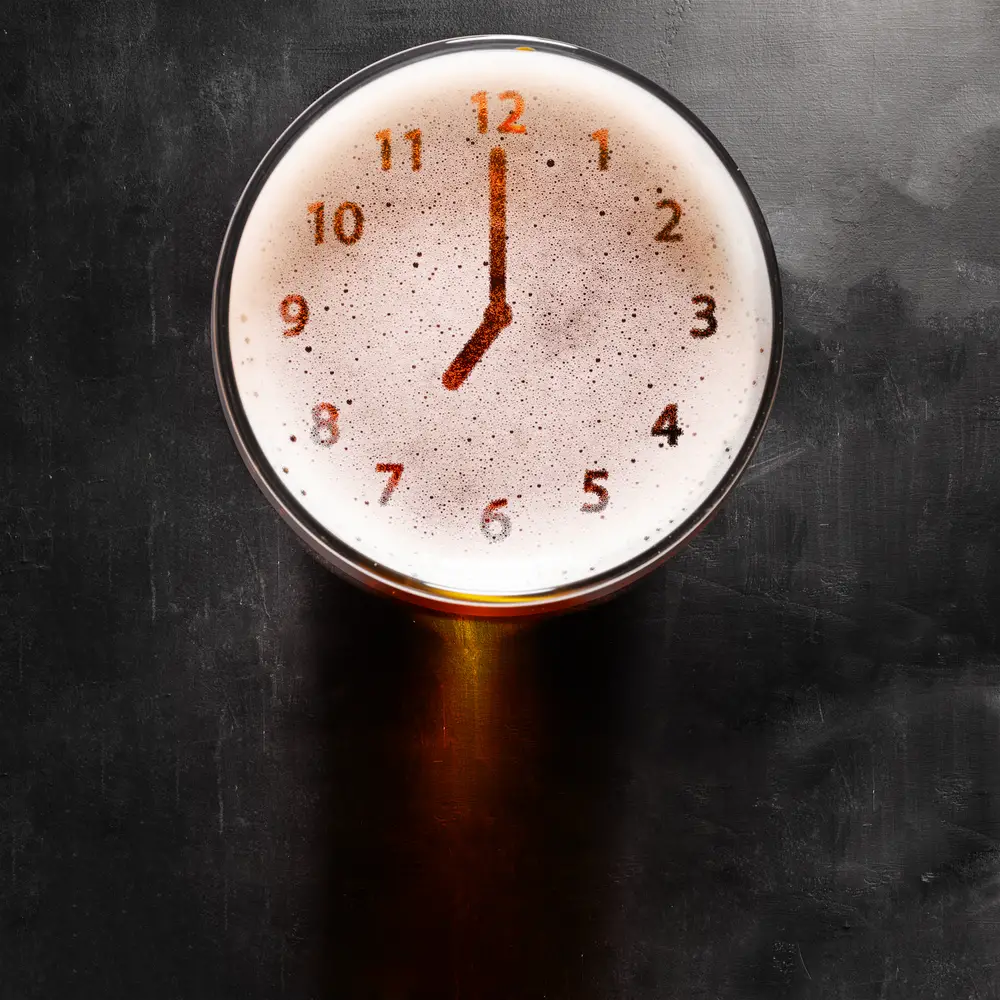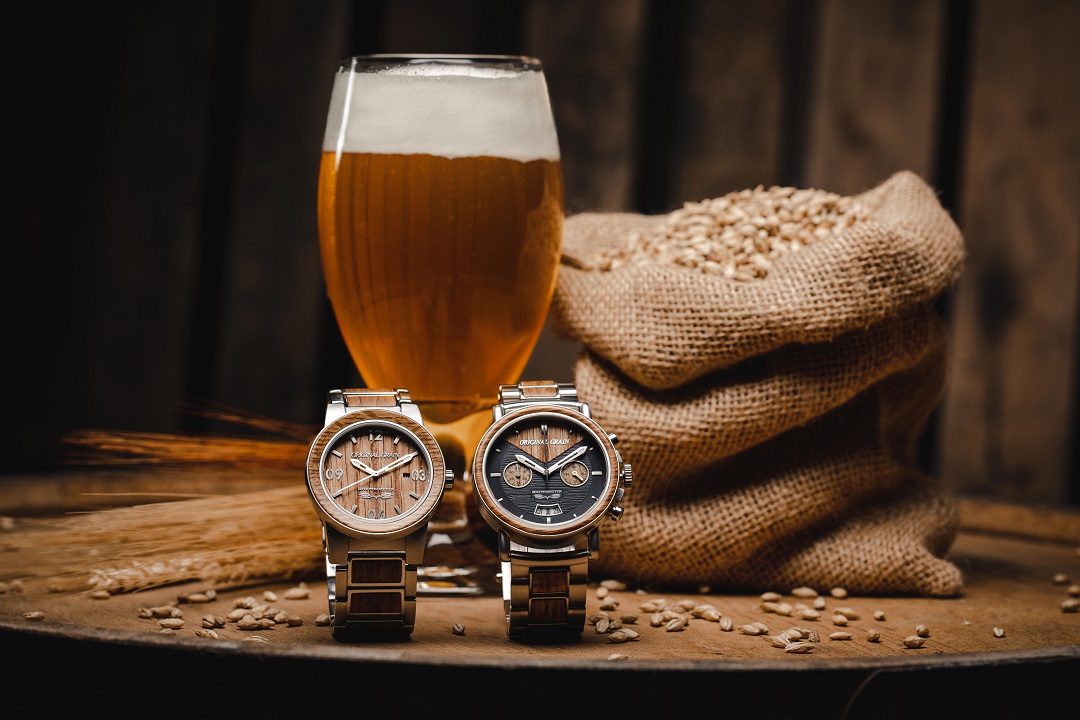Beer has been a popular alcoholic beverage for centuries, and its flavor and characteristics can vary greatly depending on the type of beer and how long it is aged. Aging beer can significantly affect flavor, appearance, texture, and alcohol content.
So, how does time affect the characteristics of beer? Let’s delve into the various ways.
Table of Contents
ToggleHow Time Affects Beer Characteristics

When aging beer, the main factors are flavor, appearance, texture, and alcohol content. The amount of time needed to age a beer properly varies depending on the type of beer being aged.
Some beers may need to be aged for weeks or months, while others may only need to be aged for days or even hours. Generally speaking, aging beer results in changes such as a more complex flavor profile, smoother texture, and increased alcohol content levels.
- Effects Of Aging On The Flavor Of Beer
Aging affects hops and malt flavors differently; hop-forward beers lose some of their hop bitterness over time, while malty beers gain complexity from oxidation processes during aging. In addition to affecting flavors directly related to hops and malt, aging also plays a role in developing other flavors through oxidization processes such as esters (fruity aromas) and phenols (spicy aromas).
- Role Of Oxygen In Flavor Development During Aging
Oxidation is one of the essential components in flavor development during aging; oxygen exposure helps speed up reactions between compounds that result in unique aromas and flavors.
When exposed to oxygen during aging processes, certain chemicals in beer interact with each other, resulting in reactions that create new molecules that give off different smells than those initial chemicals did before interacting with each other. This process helps develop complex flavor profiles that weren’t present before aging the beer.
- Effects Of Aging On Appearance And Texture
When aged correctly, certain types of beers can change their color from golden yellow hues to darker shades like amber or mahogany, primarily due to oxidation reactions similar to those found in wine-making and exposure to light over time.
Regarding head retention (the amount of foam created by pouring a beer), beers usually become less foamy over time, primarily due to carbon dioxide released through evaporation during aging.
Carbonation levels also decrease significantly over time since more carbon dioxide is lost through evaporation than what was initially dissolved into the beer at bottling time; this can lead to a flatter tasting product if not considered when cellaring or storing beers for an extended period.
- Effects Of Aging On Alcohol Content In Beer
Alcohol content increases over time primarily due to natural fermentation processes caused by yeast activity still present within bottles/kegs after packaging; this process also causes slight increases in acidity levels, which can contribute towards changing overall taste profiles over time if left unchecked for too long.
On top of natural fermentation processes increasing ABV levels, aging can also help reduce hoppiness contributed by hop oils breaking down slowly over extended periods stored at cool temperatures; this often leads to more subtle hoppy flavors, which can be desirable depending on individual tastes regarding bitterness levels desired from IPAs & Pales Ales among other hop forward styles.
- Benefits Of Aging Beer For Long-Term Storage
In addition to helping maintain stable alcohol content levels over time through the natural fermentation processes mentioned above, aging also prevents oxidation reactions caused by UV light exposure; sunlight rays are the fundamental cause behind “skunky” aromas typical among certain lagers stored without protection against UV rays for extended periods.
Proper cellaring/aging techniques help prevent these undesirable odors from developing from sun-exposed bottles in a warm room or higher. A cooler environment helps slow down the chemical reaction rate allowing you to store your favorite beverages longer without compromising quality.
Learn more about UV radiation.
Best Way To Store Beer

- In The Fridge
Storing your beer in the fridge is one of the best ways to keep it fresh. The cool temperature will help to prevent the beer from going bad and will also help to preserve its flavor. Be sure to store your beer in a dark place, as light can also cause it to go bad.
- In A Cool, Dark Place
If you don’t have a fridge, storing your beer in a cool, dark place is the next best thing. Again, the cooler temperature will help to keep the beer fresh and will also help to preserve its flavor. Avoid storing your beer in a warm place, as this will cause it to go bad quickly.
- In A Wine Cooler
Another option for storing beer is a wine cooler. They are designed to maintain a consistent temperature, which is ideal for storing beer. Be sure to set the temperature of the wine cooler to between 45-55 degrees Fahrenheit.
- In A Keg
If you have a beer keg, you can store it in a keg fridge or kegerator. It is an ideal storage option as it will keep the beer fresh and carbonated. Follow the manufacturer’s instructions for setting up and using your kegerator.
- On Its Side
When storing your beer bottles, be sure to store them on their side. It will help to prevent the yeast from settling at the bottom of the bottle and will also help to keep the beer fresh for longer.
- Upright
You can also store your beer bottles upright. It is not as effective as storing them on their side, but it will still help to keep the yeast from settling at the bottom of the bottle.
Closing Thoughts
Time considerably affects taste, appearance, texture, and alcohol content levels when storing and aging your favorite brews.
It’s important to understand different factors contributing towards these changes to order proper care for your beverages and maximize shelf life while maintaining original quality standards expected from products fresh off taps or shelves stores worldwide!
Taking into account details discussed throughout the article regarding “how does time affect the characteristics of beer,” we provide a clear understanding regarding best practices when it comes to storage & preserving craft brews alike!

I am a passionate beer connoisseur with a deep appreciation for the art and science of brewing. With years of experience tasting and evaluating various beers, I love to share my opinions and insights with others and I am always eager to engage in lively discussions about my favorite beverage.
















